#also to clarify i am not making a statement about 'when life begins' re: conception
Explore tagged Tumblr posts
Text
Officially, in the western church, today isn't the Annunciation. This is Holy Monday, and the Annunciation is moved to avoid coinciding with Holy Week. I think if it were during the Triduum I would appreciate this, making space to hold both days separately. But it's Monday, and they can't stop me from thinking about Mary during Holy Week. March 25 is a traditional date of both Jesus's death and conception, as well as the Creation—a spring equinox of redemption. Holding space for all these things has always been appropriate. Birth and death coexist; Jesus's beginnings were the beginnings of his mortality. The angel announces the future, and whoever listens must live through all of it.
What did it mean for Mary to say yes to this? We laugh at the "Mary did you know?" lyrics, because we know she knew. But she also didn't have to know the details of God's plan to say yes to what every parent says yes to—witnessing. Acknowledging the bringing into the world of a frail being, perhaps giving your body to make this happen, praying that you will die before they do but knowing that is not promised. And every parent living under a violent state knows what it is to hope it's not your kid that's next (whether you're a Black parent teaching your child how to talk to cops, or a Palestinian parent hiding in rubble, or a Jewish parent under Roman occupation who's seen the crosses outside the city walls).
Do you think, at the foot of the cross, Mary thought of her response, "Let it be unto me according to your word"? After bearing that Word inside her, teaching him how to walk, waiting for God to change his mind, to reveal a ram caught in a thicket so her son wouldn't have to die after all, do you think she remembered her teenage self, magnifying the Lord? "The Almighty has done great things for me"—and to me. Great as in too big to look at all at once, bloodstained things. The power of the Most High is overshadowing her—the shadow of the cross—his flesh broken, and someone (including her perhaps) will take him down and wash him for burial.
What does it mean to hold space for that day when an angel tore into her life, breaking it open for God—during Holy Week? If we desire a feast, we should wait until Easter, I agree. But today I honor a lady of sorrows—I desire an acknowledgement of the violence of agreeing to live and love and create when it will be torn away. The story never ends there, but we must live through this week (and whatever weeks of our lives hold these things) saying yes, witnessing. Judas quit before the miracle happened—he couldn't witness death so he didn't witness the life (on this earth). Mary kept saying yes, even at the end.
We can never know everything we are saying yes to when we surrender to God. She knew in one sense, yes, but no one knows what it's like to lose a son until it happens. And no one but her knows what it's like to be the Mother of God. We already know what God wants us to do, but we don't know until it happens how much it hurts—and what the dawn will bring. What swords will pierce us, what promises will be kept.
When we say the Magnificat, we usually add a Gloria at the end—Mary did not have those words (the Trinity would not be formulated for another couple hundred years), but we have them. When we sing her song, we hold space for the ways we see God exist, and she saw those ways intimately. She held the Son and was surrounded by the Spirit, and now the Father holds her. As we live through Holy Week every year, every year she says yes. God's love continues unfolding. As it was in the beginning, is now, and will be forever. Amen.
Your assigned reading for today (should you choose to accept it) is @tomatobird-blog 's comic "Thirty Years." A blessed Holy Monday (and Annunciation) to you all.
#i'm not catholic. sorry for leaving out what i'm sure all of u catholics would add#also to clarify i am not making a statement about 'when life begins' re: conception#life is always beginning and ending. jesus's conception is a feast because of the annunciation#not as a scientific or theological statement about fetuses#christianity makes space for fluid boundaries around life and death and I entrust that knowledge to god#my posts
87 notes
·
View notes
Text
Some musings on Jim and a “normal life”
One of the most common gripes I see with Jim’s transformation is that he can no longer lead a “normal” life and, therefore, his life is ruined. Sometimes this mindset even extends to before his transformation with the concept of him being the Trollhunter at all, because after all the Trollhunter is set up to be “Merlin’s champion” and Merlin Bad™.
It brings to mind Jim’s monologue at the beginning of Unbecoming:
“Is this what you wanted? To hurt everyone? To ruin my life? Why did you choose me? Huh? I wish I’d never picked you up in the first place. You made a mistake.”
So that proves it, right? Jim’s life has been utterly ruined by becoming the Trollhunter and he regrets ever picking up that amulet. Case closed!
Except....not really.
Using this quote to prove that Jim’s life is ruined kind of completely ignores the rest of the episode. Let’s put it back in context.
At the moment he made that statement, everything seemed to be going wrong, wrong, wrong for Jim. His worst fear has been realized: saving Enrique allowed Gunmar to escape. He is now imprisoned by the Tribunal and faces the potential of literal execution. That’s terrifying. Of course he’s gonna be rethinking the events that lead to it. Of course a normal mundane life is gonna sound a heckuva lot better than “I screwed up so badly that the Big Bad has escaped and will probably bring about the end of the world and also I’ve been arrested and might be executed this weekend”.
All that in mind, Unkar’s spirit makes an appearance to give him the chance to do exactly what he so desperately wants in that moment: to go back, ignore the amulet, and live that normal life. After the initial confusion of trying to figure out what the heck just happened, Jim embraces the normality--he’s doing well in school, he doesn’t have to keep secrets from his mom, everything seems to be going perfectly...at first.
But gradually, his attitude begins to shift. Logistically things are much easier now...and yet, he’s lost something too. He’s lost his relationship with Claire. He’s lost his friendships with Blinky, Arrrggh, and Draal. He’s lost his sense of purpose. We see him kind of sinking into a depression; sitting alone and quiet for hours, becoming distant, loosing his appetite, desperately reviewing the moves Draal taught him in another life.
He’s safe, but he’s empty.
The thing that breaks him out of it is re-discovering Strickler’s plot with the bridge. At this point, he has purpose again--stopping Strickler and co--and suddenly his depression is replaced by a grim determination and he hops right back to business.
He faces yet more hardships--some of the worst yet, honestly--and ultimately comes to the conclusion:
“I am the Trollhunter, amulet or not.”
Back in the main timeline, Usurna asks if he’s willing to give up the amulet in exchange for freedom. Here it is! That chance for that normal life again that he begged for in the beginning of the episode!
But no. He’s changed his mind and is ready to face his title with a renewed determination. “I'm keeping my amulet,” he affirms, and when a nervous Toby asks if he’s sure, he confidently replies: “Yeah, Tobes. Never been more sure.”
“That’s all well and good,” I hear you say, “But surely the only reason he was depressed during the vision was because he remembered the good things from the other timeline! If he never had those experiences to begin with, there would be nothing to miss! He could be perfectly content!”
I agree...to an extent. Certainly I don’t think he’d have become quite so depressed with a normal life if he had no memories of being the Trollhunter. But....let’s go back to the very first episode, before all the craziness started.
Jim is frequently wishing for “excitement”. We only see him do it once, but based on some of Toby’s other lines ( “You’re always saying how you want your life to be more exciting, right?”), we can concur that this is a fairly regular sentiment.
Jim clarifies: “I don’t mean just, you know, exciting. I mean…more. I just need to know there’s something more to life than high school.”
Later, when Barbara discovers his secret and expresses her worry, he tells her “I think this is what I was meant to do.”
No, Jim does not have a “normal” life. Definitely not now that he’s half-troll. But honestly...I don’t think he wants one. Not really.
Jim has always, on some level, been looking for something more fulfilling than the mundane. Trollhunting provides that for him. Normal certainly sounds like a welcome break when things get stressful (and boy do they), but ultimately I don’t think he would’ve been satisfied with “normal”.
Jim is the Trollhunter.
Amulet or not.
#trollhunters#jim lake jr#long rambly post is long and rambly#not having a ''normal'' life is not necessarily nor automatically a bad thing#just some thoughts
55 notes
·
View notes
Text
Evie’s and Doug’s relationship develops the best, Pt. 3.1: Descendants Timeline
Yes, there’s going to be another part to this. Even if you aren’t an Evie/Doug person, just give this a read. It’s more of a timeline analysis, actually.
This has taken me a lot longer than parts 1 and 2 did for a lot of reasons. The most important one was that I was very conflicted about what to write. And my conflict had absolutely nothing to do with the Evie/Doug relationship at all.
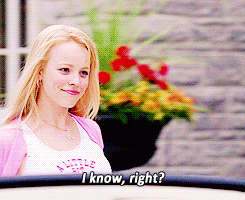
My conflict was strictly about how the writers did all the characters dirty with the canon timeline. All of them, I am making no exceptions. I am very confident in my interpretation of the Evie/Doug relationship that I actually have two different analysis depending on which timeline I chose to work with, but I am not choosing the canon timeline.

Why I chose not to work with the canon timeline:
Simply put, I am not about to do those characters a disservice.
If a year and a half have actually passed between D2 and D3, then I will lose all the admiration, respect, love and appreciation I have for Evie, Uma, Ben and maybe Mal. And I am not okay with that. And they don’t just screw over those four, it’s almost everyone. “They’re just characters”, yeah, I know that. But I grew up with them. And that’s not okay with me, screwing them up doesn’t sit well with me.
And the canon timeline is messed up anyway, I think.
Here’s the supposed canon timeline of the movies:
Over two years have passed since the VKs were brought from the isle.
The VKs supposedly being brought at the beginning of an academic year, around September.
Six months between D1 and D2 that would mean D2 took place between mid-February and late-May (second semester of an academic year, I am playing loose with the six months not being exact).
For D3 to take place a year and a half later, it would be mid-July to late-August. (Audrey is in the middle of summer school, again I am playing loose with the uttered timing being exact).
The problem is, someone posted about Jay being 17 and Carlos being 14 in the first book, and another pointed out yet somehow in D3 Jay is 18 and Carlos is only a year younger at 17. If someone could clarify that to me, I would be grateful.
The second discrepancy is Audrey’s royal return. Audrey says, “It has been a bit of a tough year.” Then proceeds to recap the entirety of the first two movies. Now, we know that Cotillion takes place six months after the coronation (televised report thing in the beginning of D2), that means Ben’s proclamation was passed SEVEN months before the events of D2 (which takes place over, like, three days). That actually leaves only five months between the events of D2 and D3 (again, playing loose with the ONE YEAR thing).
I am sorry, I just can’t get behind the canon timeline suggesting that:
Evie, heart of gold, compassionate, striving for goodness and equal opportunities Evie, put Dizzy and the other VKs on the back burner for a year and a half. I mean, Dizzy was sent an invitation straight away after cotillion, it probably took a few days. That’s not the Evie that was revealed after a strong character arc in D1 or the one developed in D2. I refuse to take that, I am sorry.
Uma, fiercely determined, a leader in her own rights, a rebel seeking retribution and a fair good life, just swam for a year and half around the barrier and in her time outs, discovered coconuts? What the actual hell? Uma is proactive, she won’t just hangout, staking the premises for a year and a half. She has her magic now, she would have done something, anything. But not make her presence and whereabouts known for 18 months? No, no way.
Mal left her arch enemy roaming. If there’s one thing Uma and Mal have in common, it is that they are both proactive. Mal won’t be sitting still, watching around for Uma. Mal would have scoured the freaking lands, seas and where ever else.
Finally, King Care Bear. Ben is the only AK who has been to the isle aside from guards and Lonnie. He saw, he knew, and he promised. He extended Uma the olive branch, he admitted he got sucked into his duties of being king and that the plan was always to start with four kids and expand the program. And he just abandoned ship for a year and a half? Going with the canon timeline destroys Ben’s… everything.
I am not okay with how this went. Not at all. It’s pissing me off and that’s why I refuse to take the canon timeline and just run with it.
Which is why, I have worked on putting together my own timeline, and I even put together a few points that prove it. This is gonna be all over the place, I hope you can follow.
Let’s establish the timeline, shall we?
Like I said before, I was going nuts trying to fit the timeline to the supposed narrative. I was almost loosing it when I found the clip (well, the poorly disguised recap really) that is Audrey’s royal return.
It made me pull my hair out, really.
Now, assuming that:
The academic year starts in early September and ends in early June (maybe late May),
Ben brings the VKs at the beginning of the school year (which is a perfect time, actually), then D1 takes place throughout September and early October and D2 occurs around early April. That gives space for Audrey to have a leave off her second semester and all, instead of just dropping out mid semester. (re-check the second discrepancy in the canon timeline for further detailing).
Now assuming that Audrey was accurate when she said, ‘a year ago’, that would place D3 around September, which I highly doubt because D3 takes place in summer. So, let’s assume she wasn’t accurate and that D3 takes place, say, mid- July.
That would make sense regarding:
The Dizzy situation. Maybe three months is how long it took for the arrangements of establishing the VKs integration program and all.
It would also explain how Uma spent only three months circling the isle because, as I said before, my girl Uma is a proactive, crafty little shit who wouldn’t just passively swim around for a year and a half waiting for shit to happen.
Also, Mal tells Ben they’re getting more guards for the Uma problem (scene right before the proposal), I don’t think they’d wait all this time to get more guards where the King resides, really.
Granted, that wouldn’t explain how much the isle changed and how everyone wants in on the move to Auradon and how all the parents are suddenly nice, good people looking out for their kids. But come on, D3 was a giant, unexplainable plot hole anyway. (I got issues with almost every minute in the movie, but I appreciate it for what it is. But come on, there should have been a screening process for people getting off the isle. Wasn’t that the point of the applications?)
This timeline though means that we’re in deep shit regarding how old everyone is:
Ben turns sixteen in D1 on coronation day and he’s still sixteen ya’ll, it hasn’t been a full year yet.
Jay is graduating, so Jay is eighteen.
I know Carlos and Jane are supposed to be younger, so I assume it is Jane’s sweet sixteen celebrated in D3.
I have no idea what’s up with Evie’s and Mal’s ages, though. But taking into consideration the birthday incident from the book, I suppose they are the same age? They’re either Ben’s age or they are seventeen. I keep going back and forth and that’s the only thing I can come up with.
From the whole sandbox/Shrimpy backstory Gil tells in D2, I can only assume Uma is the same age. No idea about Harry and Gil though, but I am assuming Uma’s age for them, give or take one year at most.
King Care Bear IS too young to be proposing. Ben’s and Mal’s relationship moved way too fast for a couple of sixteen-year olds. At least from my POV, you’re free to think what you want.
The entire franchise is just one major plot hole. That I love so much.
Please, please, please, take the time to let me know If I missed anything. This has been bothering me since I first saw the movie. Maybe I overlooked something or another. Either way, let me know what you think.
Relationships I’d consider canon-confirmed:
Only FOUR romantic relationships became canon in the actual Descendants timeline. Ben and Mal, obviously. Evie and Doug. Chad and Audrey (broken in somewhere between October and April). Carlos and Jane (Got together in April).
I am adding Jay/Gil in D3, we all saw that, right?
Harry/Uma post D3. Because you know it and I know it. And we all talk about how it will happen. Because it will happen.
The only couples who are confirmed true loves are Mal/Ben and Evie/Doug.
Harry/Uma will be confirmed post D3. Evie and/or Audrey will match make. Uma, tired of his flirtatious behavior, will seek Mal’s help to put Harry under a spell so she could save him with a true love’s kiss and assures Mal it will work. But she will get cold feet and Evie will get her sweet, sweet revenge.
He will be saved, of course.
Extra point I’d like to highlight:
Mal states in D1 that there’s no dating on the isle, that it’s mostly gang activity. That statement alone just explains all the relationship dynamics in the franchise involving any VK, but everyone is overlooking it.
It explains (somewhat, but not really) why Mal was hesitant about being in love in D2, thus doubting the concept of love, letting the pressure get to her and running off to the isle.
That explains Jay’s playboy attitude, as well, if you think about it. Which is close to Evie’s flirtatious personality pre-Doug. That explains Carlos’s hesitance to ask Jane out, he hadn’t done this before and he’s only fifteen.
That explains why Uma and Harry aren’t “together-together” even though they are together. Like I said above, Uma and Harry should be considered future-canon because “Uma knew, try as she might, she couldn’t hurt his feelings. It was all part of the game of question-and-rejection they’d played forever.” I haven’t read the books but thanks to tumblr, I know this exists.
Like for the core four, the isle wasn’t a safe environment for a relationship. It even explains why she would be reluctant to get with him and it develops Harry’s own flirtatious behavior. Like Jay! And, again, Evie pre-Doug.
You’re welcome, Huma people!
Now that the (well, MY) timeline is out of the way, I can go back to topic. I don’t know about what you think, but this timeline and the whole “gang activity” ordeal adds to Evie’s and Doug’s motive to take things slow.
Next part will all be about Evie’s and Doug’s relationship. I have a lot to say about that one.
#disney descendants#descendants#descendants 2#descendants 3#huma#devie#bal#jarlos#icebreaker#evie descendants#evie grimhilde#doug descendants#doug son of dopey#king ben#ben florian#mal#mal bertha#jay son of jafar#jay#carlos de vil#harry hook#uma#uma daughter of ursula#audrey#audrey daughter of sleeping beauty#jane daughter of fairy godmother#chad charming#audrey descendants#they all deserved better#they screwed everyone over
158 notes
·
View notes
Text
Mortis Explained (In Star Wars Rebels & The Clone Wars)

SPOILERS about Rebels season 4 ahead. ��Ezra, it’s art, everything has a meaning.” -Sabine Wren. Rebels season 4, ‘Wolves & A Door.’ Before I begin, keep this quote in mind. Nothing done in these episodes is an accident. Every detail is utterly and completely intentional. They just told you so. This post will be an ever expanding explanation of all things Mortis, as seen in Star Wars Rebels and The Clone Wars. Hopefully, this might aid some people in a fuller understanding. The Clone Wars ‘Mortis Trilogy’ (season 3) was essentially George Lucas explaining in greater detail, what The Force is to him, and now by extension, his Padawan Dave Filoni. I even see a lot of this in The Last Jedi (but that’s another blog!) As Joseph Campbell writes: “It will always be one, shape-shifting yet marvelously constant story that we find, together with a challengingly persistent suggestion of more remaining to be experienced than will ever be known or told... It would not be too much to say that myth is the secret opening through which the inexhaustible energies of the cosmos pour into human cultural manifestation.” The Mortis stuff (even the Yoda arc. TCW season 6 etc ) is the attempt to further express these inexhaustible energies. Before I go further, we need to understand the true purpose of all this stuff through the lens of Joseph Campbell. and we need to see through it translucently. As Campbell noted, “The problem of the theologian is to keep the symbols translucent, so that it may not block out the light it is supposed to convey.” What needs to be cleared from the lens is the view that Mortis could be anything other than what spirituality has always been in mythology through the ages: an attempt for the hero to return and show us that all is One. That all physical life in space and time is actually literally one with the spirit realm. This is what Campbell was on about and by extension (as it is more that well documented), this is what George Lucas was intentionally on about, in directly translating Campbell’s ideas to screen. The truth is that SW conveys spiritual ideas of the world – the ones that all the spiritual teachers have spoken of through time - SW does not make up its own spirituality. So to understand Mortis, one must understand Campbell’s view on spirituality in myth, more than Star Wars. Finally we need to understand what Campbell was telling us about the symbols. Their importance is not in the literal meaning, but in how they seem to magically transport us to the other world. They have always been used to this great effect in Star Wars. I.e. It is not so important to literally understand who The Father, Son and Daughter are in Mortis episodes, as it is to feel the “tone” that they bring through a common “Trinity” archetype, like The Father, Son and Holy Spirit, or Brahma, Vishnu and Shiva, or Thought, Word & Action, or Body, Mind and soul, etc. Now, let's get started! The Two Kingdoms Are Actually One Let’s start with this George Lucas quote and then compare it to one of Campbell’s: “The role of the artist is to find the common threads that make all people one.“ In contemplating this quote, we begin to see that Lucas was making his intent very apparent. Yes, this is totally in line with everything Campbell was saying in his work. The mission could not be more clear! Compare to Campbell: “And here is a great key to the understanding of myth and symbol – the two kingdoms are actually one… and the exploration of that dimension, either willingly or unwillingly, is the whole sense of the deed of the hero.” Simply watch the Mortis stuff with that quote in mind - the two kingdoms (i.e Heaven and Earth) are actually one - and you will begin to notice your awareness of its metaphors telling you something. As the character of The Father said, “What happens here (on Mortis) will happen in your universe.” This may seem like something mysterious and bewildering, but it is in fact something that is actually quite utterly clear; he two kingdoms are actually one. This is why in The Clone Wars season 3 Blu Ray special features, director Dave Filoni said that he would not explain” Mortis - because it would rob the viewer of their ability to understand the metaphors. That is the purpose of this blog post, to uncover the language of the symbols. Which Star Wars did not make up, it is using, and always has used, the tried tested and true one. We finally see more of a conclusion to the “Mortis Trilogy” episodes, in Star Wars Rebels season 4, titled ‘Wolves And A Door’ and ‘A World Between Worlds.’ And wow what a conclusion! Everything that has been given so much more clarity. As I had been speculating, it is fully apparent now that Ezra Bridger’s last name was chosen to symbolize that he was to be a “bridger” between the Two Worlds. In the latter episode, Ezra comes to “understand” the Mortis mural on Lothol’s Jedi Temple, and thereby is able to walk through to the spirit realm. Interesting to note that religious art in cultures all over the world has always been thought of as a “window” as such, by the devout. In the Easter Orthodix Christian tradition, their painting are literally thought of as “Icons” that mysteriously actually transport one to the oether realm (like this famous Holy Trinity Icon by Russian Iconographer Andre Rublev). Here is a screenshot of the mural. Anyhow, once there, Ezra walks along pathways encountering many circle shapes, which turn out to be actual windows through time (more on that later), but here is my instagram post and screenshot of the circles. They are essentially a symbol for wholeness of the universe, and even the cyclical nature of time. Noted concept artist and Star Wars commentator Paul Bateman shared this Taost view on the circle symbol, on a post of mine on facebook. Paul commented, “It's all in the Tao - or Enso if you prefer. Microcosm to macrocosm, from the atoms to the spiral arms... it's all circles my friend from the womb to the tomb. The nothing and the all.” The microsom of the macrocosm is inside us all. Oh, it should be noted that Ezra Bridger was also walking across bridges to get to the circles. “Bridger.” Bridging the Two Worlds. The Great Deed Of The Supreme Hero After a careful re-reading of the The Hero With A Thousand Faces, I noticed Campbell was saying (repeatedly to make a point) that the hero’s great deed is essentially that he/she discovers that everything in life and the universe is one, that there is literally no separation between oneself, the cosmos and the spirit realm. He wrote, “The great deed of the supreme hero is to come to the knowledge of this unity in multiplicity and then to make it known.” Anyhow, Campbell adds the modern psychoanalytical side: that unconscious is also where we find the symbols and that other realm. Therefor, the Mortis trilogy starts with Anakin, Obi-Wan, and Ahsoka fall asleep into the dream world, the unconsciousness. In the Jungian psychoanalytical view, we enter this other world symbolically through dreams. Once there, there our three heroes find they are one with dark and light (Son and Daughter) and even other ‘dead’ beings like Qui-Gon Jinn, who says “I am here because you are here.” This statement could actually not be any more unambiguous; when all is one, you are connected to everyone everywhere, whether “dead“ or alive, simply because you exist. Again, the physical, spirit and unconscious realms are literally one. Anakin even sees a vision of himself as the future Vader. Even time is one, meaning time all happens at once. More will be said later on the nature of time in a universe where there actually is no such thing as time. For now, let’s quote Campbell, “What is understood is that time and eternity are two aspects of the same experience-whole, two planes of the nondual ineffable.” In Rebels episode ‘Dume’ (s.4 ep. 11) the Wolf tells Ezra his name is “Dume.” This could also not be more clear, in this sprit realm that Exra has been transported to, Kanan (Caleb Dume) and the wolf are one and the same, and the oneness of Kanan, the wolf and the entire universe is already and always inside us. Here is another Campbell quote to clarify even more: “And so it is that the cosmic symbols are presented in a spirit of thought bewildering sublime paradox. The kingdom of God is within, yet without.” That bewildering sublime paradox, of The Force being both within you, yet also everywhere outside you, is Mortis, as Mortis itself is both within our heroes and without them. It is an apt metaphor of the microcosm and the macrocosm. I can’t think of two better words than bewildering and sublime to encapsulate Mortis! We Are The Light And The Dark George Lucas’ explained this stuff to The Clone Wars writing team, available as an easter egg special feature in the saga Blu Ray set: “We have a selfish side and a selfless side, when those two are kept in balance, we can do a lot of good.” I paraphrased a little, but I’ll watch this feature again sometime soon to get the exact wording. That’s the scene where Anakin tames the Son (Dark) and Daughter (Light). It’s that simple. Even the Dark and Light sides are one. The obvious lesson here from Lucas (and all the mystics through time) is that if we repress our dark side, and pretend it is not there, it will grow uncontrollably and take us over, to a point of imbalance. Campbell explains the wholeness of these sides with the Taoist view: ‘Yang, the light, active, masculine principle, and Yin, the dark, passive, and feminine, in their interaction underlie and constitute the whole world of forms… They proceed from and together make manifest Tao.” By acknowledging the existence of our dark sides, we can understand and see clearly what we do not want to chose. We can begin to chose more selfless actions, and thereby live more fully in the light. The Eternal Moment Finally, a heavy idea and concept idea finally explained more fully in the recent Star Wars Rebels‘Mortis episodes, is the idea of time and space and how it relates to the galaxy and the ‘Cosmic Force’ in Star Wars. Today’s New Spirituality has admirably attempted to expand it’s understanding alongside science, with a concept that is sometimes called The Eternal Moment, where everything is happening all at once. Where even time and space are one! Walking around that circle, as the Wolves do in the Rebels episode ‘A World Between Worlds,’ would be the ultimate symbol for that, as there really is no begging point nor end to time. I’m no scientist, but the basic understanding of modern science is that there is no such thing as time, and I understand that basic premise. Some teachers and gurus in modern spirituality, also call it a “Divine Dichotomy.” If time is happening all at once, one would assume the future is written, so how could one have free will? The simple answer can be found in the idea of multiple parallel universes. We experience our differing chosen fates on different planes of existence, simultaneously. You might be saying “rubbish”, that’s okay, just follow me a little further here. The important thing here in mythology is not whether this is true or not, the important thing is that the symbols and metaphors of myth evolve and continue to attempt to express the insights of it’s time. I commend Star Wars creators for continuing to follow George Lucas’ intentions in doing this! The Daughter expressed this to Anakin on Mortis, “I am the beginning, the middle, and the end.” So basically, in the Rebels season 4 episode ‘A World Between Worlds’, Ezra peers through one of the circles (a window through time and space) to save Ahsoka from being killed by Vader on Malacor in the Rebels season 2 finale. This is also insight into “The victory for all time” that Yoda spoke of in the very last episode of The Clone Wars - the victory of all time is to exist all the time! But I digress. The knowledge that Ezra gains here is that he needs to learn from Kanan’s final act, to also selflessly let go of his attachments - and further, to accept the will and intentions of others. Ahsoka explains this to him, as she herself choses to return (travelling through time) back to her “decent” into the temple on Malacor. Finally, this now further clarifies why The Father made Anakin forget his vision of his future as Vader on Mortis in The Clone Wars season 3 episode. Anakin sees but one of his possible futures, but he needs to forget if, if he is to have true free will, when the moment comes for him to chose. Interesting that they have The Father touch Anakin’s Third Eye as he makes Anakin forget, using Hindu symbolism. Oh! By the way, this is also why when Anakin, Ahsoka nd Obi-Wan wake up from their Mortis “sleep”, it only registered as an instant in time. Just another Eternal Moment! Your Focus Determines Your Reality (Even In The Other Dimensions) Other concepts in modern spirituality heavily focus on thought as manifestation of reality. This is something I am convinced that George Lucas was studying heavily between his two trilogies (see my final note in this blog for recommendations of who to start checking out). Qui-Gon Jinn’s quote from The Phantom Menace defines what I have come to believe was Lucas’ key artistic statement regarding spirituality in the Prequels, “Your focus determines your reality.” This is essentially what Anakin did, he focused on Padme’s death, and that focus made that his reality. He killed her. He created this fate through thought. Dave Filoni further explained how this works even faster in the Cosmic Force. He explained: “You have to be careful when you’re moving through these big powerful dimensions and what you’re wishing for. Everything he [Ezra] wishes for, out loud, is a dangerous thing to do. If you watch and listen when Ezra talks and he makes certain statements, there’ll be a thunder clap, and that thunder is representative of something else listening.” The time between what you think and what is created is instantaneous, like thunder. Thought is creation. Or as more commonly heard in the Western religion, "In the beginning was the word, and the word was made flesh." Through this lens we even begin to understand other quotes from the Mortis Trilogy. When Qui-Gon responds to Obi-Wan, “I am here because you are here”, we see that it's because the two worlds are actually one, and everyone is always already connected to everyone else - even through the oness of space and time. It just takes a willingness to be aware of that. Or it takes being a Jedi who’s awareness is more honed, while also on a specially connected nd Force strong place like Mortis or Lothol. The Mortis Mural As a Fine Art college grad and someone who apprenticed with an Eastern Orthodox “Iconographer” for many years, I was struck by how on point the Mortis mural on Lothol was. It reminded me most of this famous Eastern Russian Orthodox "Icon" by Rublev. Especially with use of hand gestures and the way the Daughter turns and bows her head to the central figure. This bog is getting long, so for brevity I’ll just say that the basic concept of “Icons” are that they are actual windows to heaven. Not painting but actual doors. So the Mortis mural pays homage to these iconic “Trinity” paintings, and uses the symbolism most appropriately. The Two Worlds Are Actually One. I love that they keep telegraphing what they are doing by using key words that clearly and utterly indicate what language they are doing. Another moment like this, is when the Trandoshan worker say’s, “Lord Hydan, we have discovered more symbols. Symbols. Another word Campbell repeats to ne end. Sabine even say’s that the mural is a “language,” and calls the Father, Son and Daughter, “Archetypes”. It’s a language of “archetypes” and “symbols”. That’s Campbell. That’s the power of Myth, That much should be totally and completely clear by now! The Message Continues In Rebels, &The Sequel Trilogy So, even though the answers were there all along in symbol and metaphoric language, we now have more clarity on the Lothol Wolves, the Owl and Ahsoka. Ahsoka basically expresses that the Owl is another manifestion of The Daughter in who once helped her to survive. The Wolf is clarified as a manifestation in The Force of the “will” of Caleb “Kanan” Dume. Now that we know time is a circle, happening all at once, we see why Caleb Dume appeared to our characters even before Kanan had died! The Eternal Moment. This is great mind blowing stuff! Star Wars is so concisely expressing some of the heaviest concepts of spirituality and the universe. We see that dialogue has been obviously happening between Dave Filoni and the creators of the Sequel Trilogy. There are endless ties to cite that show this, like the Ying / Yan mural on Mortis to the one in the cave pool on Ahch-To, but I’ll stop there or this blog will go on forever. Dave Filoni is obviously Lucas’ Padawan with this stuff, for now I’ll just start with something Filoni said in the Rebels Recon episode on the season 4 episode ‘Jedi Night.’ "I could just see his (Kanan's) eyes, that's a moment where he could see here (Hera). In this moment, because he's in this point where he's this kind of energy, where he's about to die, where he's more one with everything than he's ever been, he'd have this moment of clarity, where things like physical sight just doesn't matter." Again, actual literal oneness between the physical and spiritual realm. The title of Rebel episode ‘A World Between Worlds‘ is literally a riff on what Joseph Campbell repeatedly said is the great “deed” done by every hero in mythology, they return from their hero’s journey to show that “the two kingdoms are actually one.” Ezra has now returned from his bridge just in time for the series finale! We will see him return, like all heroes, to bring the treasure of “One final lesson” - to make his community one and whole again. The circle is now complete.

Photo: Anakin was “chosen” to be whole with himself, everyone else, and the entire universe, by balancing his light and dark sides. As is Ezra. As we all are too. * * * Here are few of my related blogs on this theme: A blog on a spiritual phrase used often in The Clone Wars - “Who You Really Are.” This is an essay on Ahsoka’s fate in the Rebels season 2 episode finale. A blog about Luke Skywalker’s Buddha and Jesus-like hero’s journey in The Last Jedi. * All Joseph Campbell quotes are taken from his classic book, The Hero With A Thousand Faces. If you truly enjoy this stuff, please check out Joseph Campbell as a starting point for these concepts in traditional world religions and mythologies.. If you are intrigued by how modern spiritual teachers speak of this stuff, please check out the writings of Neale Donald Walsch, Eckhart Tolle and Wayne Dyer to name but a few. Try some of the great poets like Kahlil Gibran, or even a great speaker like Alan Watts. They are all saying the same thing. But remember, these new teachers are only expanding on the core messages of the mystics through the ages, in all mythologies and spiritualties!
#mortis#star wars rebels#the clone wars#dave filoni#george lucas#the force#spirituality#joseph campbell#the heros journey#the hero with a thousand faces#myth#mythology#lucasfilm
45 notes
·
View notes
Text
Epic Movie (Re)Watch #161 - Star Trek Beyond

(GIF originally posted by @forquicksilver)
Spoilers Below
Have I seen it before: Yes
Did I like it then: Yes.
Do I remember it: Yes.
Did I see it in theaters: Yes.
Was it a movie I saw since August 22nd, 2009: Yes. #440
Format: Blu-ray
1) The preproduction for this film was slightly troubled. JJ Abrams was committed to Star Wars: Episode VII - The Force Awakens so co-writer of the first two films Robert Orci signed on as director. He ended up leaving production though, taking his cinematographer with him, and it was a little while before Justin Lin (Fast and the Furious 3 - 6) was hired to replace him. Writers Simon Pegg and Doug Jung reportedly wrote the script in a bit of a hurry as they still had a release date to meet. But at the end the film turned out really well, so everything worked out in the end.
2) This film was released during the 50th anniversary of the Star Trek franchise.
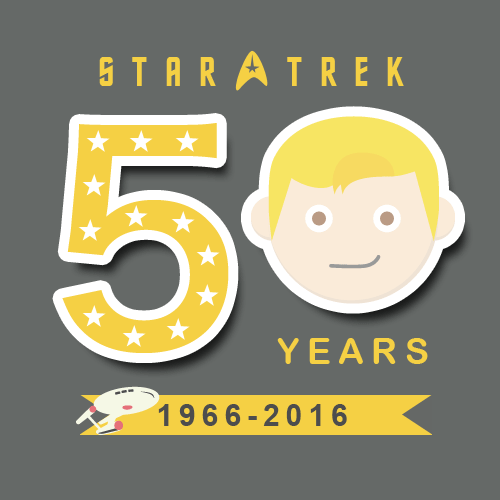
Having said that, the work done by writers Pegg and Jung as well as Lin’s direction I think help to make the film feel like a balance between old Trek and new Trek. I’ll get into more details on that as I go along.
3) The opening scene.

The opening has an incredible sense of fun and humor to it (with the aliens Kirk is trying to break peace with seemingly gigantic and ending up being the size of a chihuahua) and honestly feels like it could be the concept of an episode for the original “Star Trek” TV show (says the guy who’s never seen an episode of the original series). It establishes some of the lighter/funner tone this film will feature compared to the titular darkness of Into Darkness as well as Kirk’s initial conflict in the film. It is a wonderful beginning.
4) Kirk’s tiredness.

Kirk is three years into his five year mission in space (which, in a not-so-coincidental-way, is how long the original series got before cancellation) and it is starting to weigh on him.
Kirk [in his captain’s log]: “As for me things have started to feel a little...episodic.”
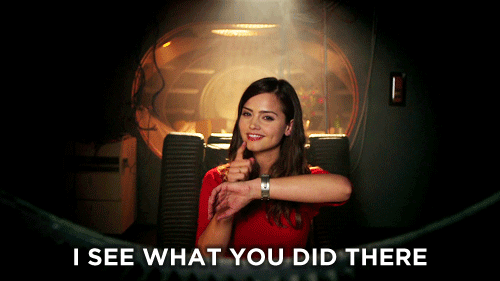
There’s no direction in space, it is just infinite and that is starting to weigh on Kirk. It has him questioning the point of it all. It has him questioning who he is.
Kirk [after commenting he’s now a year older on his birthday]: “A year older than [my father] got to be. He joined Starfleet because he believed in it. I joined on a dare.”
Bones: “You joined to see if you could live up to him. [Mentions how Kirk has spent all this time trying to be like his dad.] Now you’re wondering what it means to be Jim.”
And it is through the fire of conflict in this film that Kirk will reclaim his identity and who exactly he is.
5) The release of this film was given an unexpected dose of sorrow as actor Anton Yelchin tragically passed away about a month before the film’s release.
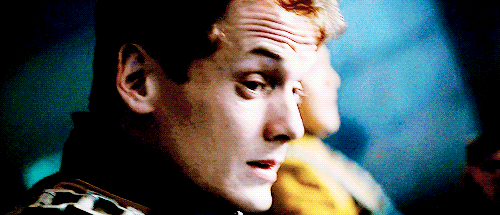
There is a scene early in the film where Bones and Kirk drink some Scotch they found in Chekov’s locker. They pour three glasses, the third one being for “absent friends” (as in those we’ve lost who could not be here now). The absent friend I believe was meant to be Kirk’s later father, who the pair are talking about. But in the wake of Anton Yelchin’s passing the scene takes on a much more somber meaning and feels more like a tribute to him. After the film’s release I read on IMDb that the scene was included to pay tribute to Yelchin, but I can no longer find that piece of trivia suggesting it may have been false. Either way, it is impossible to divorce Chekov from that scene or the unintended tribute it pays to the late actor. I’m going to miss seeing you in the movie, Anton.


6) Yorktown.

Yorktown is quite possibly the stand out new element introduced into the film. The space station/outpost/colony/whatever is visually outstanding. Most space stations in film are defined by rigid edges and sharp boundaries but Yorktown is circular. It’s fluid, it’s organic, it moves into and through each other like a planet. Some of the camera tricks and technical aspects used to show off this new location is great. It also has an incredible atmosphere to it which ties directly into the sense of hope this franchise is all about. The air is clean, the sky is bright, multiple alien species are working in unity, and Giacchino’s again excellent score just lifts up the sense of optimism that bleeds through this place. It is a wonderful addition to not only this film but Trek lore as a whole.
7) This film introduces what I believe is Star Trek’s first canon gay character by revealing that John Cho’s Hikaru Sulu is in a partnership with another man.
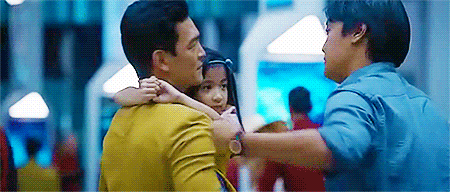
(GIF originally posted by @maclexa-bane)
However, this decision had one person surprisingly against it. Original Sulu actor and LGBT activist George Takei himself. Here is an excerpt from an article covering this in the Hollywood Reporter.
"I’m delighted that there’s a gay character," he tells The Hollywood Reporter. "Unfortunately, it’s a twisting of Gene’s creation, to which he put in so much thought. I think it’s really unfortunate."
Takei would take to social media a week later to clarify - but not disavow - his statement.
“I hoped instead that [Star Trek creator] Gene Roddenberry’s original characters and their backgrounds would be respected. How exciting it would be instead if a new hero might be created, whose story could be fleshed out from scratch, rather than reinvented. To me, this would have been even more impactful.”
I personally disagree with Takei. As a film student I can say that there seems to be this strange devotion to the “vision” of something. A decision will or won’t be made based on its support of the “original vision”. The original vision of something is almost totally irrelevant to what something actually is, however. Takei’s statements seem to be largely out of his respect for original creator Gene Rodenberry, which I can understand. But imagine some gay kid today LOVES the Star Trek movies and its characters. That kid is not going to care about Gene Rodenberry’s original vision, he is going to care about what Star Trek is today. I think seeing an already established (and incredibly important character) like Sulu express his sexuality in an open and accepted way is very much in line with what Star Trek is today (and will also have more of an impact on that kid than introducing a new character who they have no emotional investment in, but that's just my personal belief).
The franchise has transcended Rodenberry or any one person involved. It is about unity (a major theme in this film), diversity, tolerance, and hope. And as long as it respects these core beliefs which make Star Trek what it is than I think it does more than respect Rodenberry’s original vision. It respects Star Trek.
8) I am going to talk about Spock and Uhura’s breakup and Spock Prime’s death, I promise. Just later.
9) Even though JJ Abrams did NOT direct this film, Greg Grunberg is still featured in it!

Grunberg is JJ Abrams’ lucky charm, appearing in almost all his films (notably absent from Star Trek into Darkness) in one form or another. And even though Abrams serves only as producer on this flick Grunberg still gets a part. Yay!
10) I like that Commodore Paris (one of the Starfleet higher ups at Yorktown) takes the time to say this to Kirk:
Commodore Paris: “It isn’t uncommon you know, even for a captain. To want to leave.”
It’s a common problem people have in life, the loss of identity. And of course it makes sense that it happens to Starfleet officers. Nothing is defined in space. It’s just space.
11) The skirmish between Kraal’s crew and the Enterprise is great.

As a way of introducing the primary plot into the film, it shows a clear lack of preparedness on the part of the Enterprise crew which is a great place to start the conflict and move forward. A, “started from the bottom,” type way. The film opening with such a heavy thrashing and the destruction of the Enterprise leaves a strong impact on the audience. You know these bad guys are people you do not want to mess with, you don’t even want to be in the same room as them. They just took down one of the best starships ever in a matter of minutes. The scene features great action, nice surprises, and is incredibly well paced. As the first major action set piece for the film, it is truly great.
12)
Kirk: “Abandon ship, Mr. Sulu.”
There is literally NO question from Sulu and only a the hesitation needed to process that request. He doesn’t even say, “Sir?” There’s no doubt in his mind. That is how much he trusts his captain and that is how well he knows his ship to admit when it’s done.
13) Idris Elba as Krall.
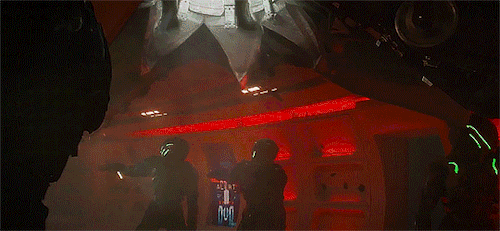
I will forever be upset that Suicide Squad won the Oscar for Best Achievement in Makeup and Hairstyling when this film is PACKED with some of the most amazing practical creatures and aliens I have seen in years. You don’t have to look any further than Krall to see that. Idris Elba is not giving an animated performance, he’s not motion capture (not to knock motion capture actors, they’re some of the most under appreciated geniuses in Hollywood). That’s him. He is able to deliver a menacing and powerful performance through strong physicality. Elba does not play Krall as human and he shouldn’t. A huge factor for the character is that he’s lost his humanity. He is a beastly shade of his former self, motivated only by madness. I think Krall may be the best villain of this new trilogy (although it’s hard for me to be objective because Nero is still my favorite). Honestly, Elba freaking kills it as Krall and I don’t think they could have cast anyone to do a better job.
From a writing standpoint, Krall just gets more and more interesting as the film goes on.
Krall [after Uhura claims he has made an act of war against the federation]: “Federation act of war!”
But more on this later.
14) This film benefits from unique groupings for a good part of the film. Bones/Spock are the most prominent, but it’s not often you get to see Kirk and Chekov interact one-on-one or Uhura and Sulu. But for now, let’s talk about Bones & Spock.
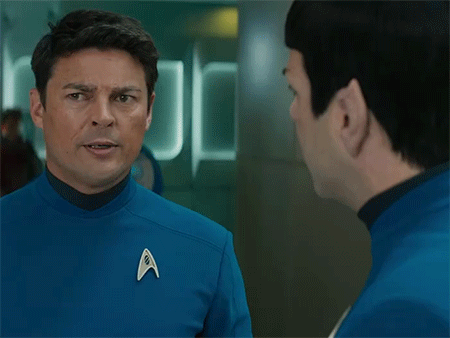
I don’t think Bones and Spock get as much one on one time as they do in this film and I am so grateful for that. It provides a unique examination of their usually humorously tense interactions which was touched upon in The Search for Spock. I’ll discuss this more as I go (in one scene in particular), but they are able to be vulnerable around each other. Let their guards down, be totally honest, and make their friendship even stronger.
15) Sofia Boutella as Jaylah.

I fucking love Jaylah. So much. I want more Jaylah.
To start, her design is incredibly unique and memorable. It helps her standout from not only the rest of the Enterprise crew but the rest of the inhabitants on the planet as well. And from the strong visual you are able to build into a living, breathing, unique character. She fits into the crew dynamics (particularly through her relationship with Scotty) wonderfully well and she is a kick ass queen. She is a technical genius with no training or teaching, able to set up a number of booby traps/cloak the Franklin/keep auxiliary power going. She has this deep pain that is in direct relation to Kirk’s. Her father - her entire family - died trying to save her, just as Kirk’s did. She has fears, she has strengths, she loves punk music! Jaylah on paper is amazing and actress Sofia Boutella is incredible in the part. Boutella is able to portray all of Jaylah’s wonderful layers - her badass exterior, her painful past, her growth and dealing with her fears - beautifully. Boutella is a star on the rise in Hollywood (already having starred in Kingsman and appearing as the title character in the new Mummy film coming out soon) and to date this is - I think - her best performance. She is just SO good.
A quick final note: it has been said by the filmmakers that they will not be recasting Chekov after Anton Yelchin’s death. I want Jaylah to take his place on the bridge. Because I fucking love Jaylah.
16) The relationship Jaylah and Scotty forge is so fun and heartfelt. Jaylah is able to constantly surprise Scotty and show that she’s his equal in a lot of ways, but when it comes to the pain of her past Scotty is able to help her deal with that. It’s one of my favorite relationships explored in the film and I hope to see it continue in the future.

17) The relationship with Kirk and Chekov is explored a little more subtly than say Bones and Spock but it is still there. The fact that Kirk is able to signal Chekov to help him trap the traitor amongst their midsts, and then of course this wonderful piece of dialogue.
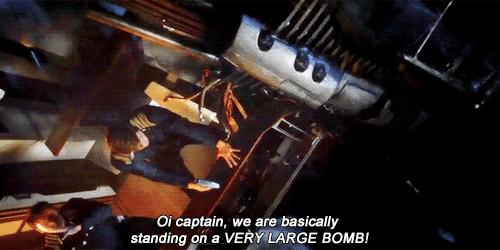


(GIFs originally posted by @alecc-bane)
Seeing any two characters have this back and forth suggests they’ve done it before. There’s a comfort there that Chekov is able to talk to Kirk so honestly about his doubts and...I’m sorry, I’m just laughing thinking about this scene. I love the exchange between the pair.
18) So it later turns out that Krall is a captain named Edison from VERY early in the Federation’s life span.
Krall: “Federation has taught you that conflict should not exist.”
Krall [MUCH later]: “We knew pain, we knew terror. Struggle made us strong. Not peace, not unity.”
He is an outdated relic, an ancient ideology in a progressive time who thinks HIS way of life was right. And he’s willing to commit mass genocide because of his outdated and hateful ways. There’s also a lose of identity there, as he tells Kirk in the climax, “I’ve missed being me.” That lose of identity in the face of infinite space is exactly what Kirk is at risk of going through, so there’s a connection there between the two that ties back in to Kirk’s main conflict (something that I love). All in all, Krall’s pain is utterly unique in the Star Trek films I’ve seen and I am impressed with the elegance they were able to write it.
19) Spock and Bones having a heart-to-heart about where Spock is in life is one of the best scenes in the film.

It is in this moment when Spock is at his most vulnerable, and it’s with Bones. He speaks as to how being one of the last Vulcan’s effects him, how it was that and the death of Spock-Prime which upset him so deeply he even broke up with Uhura because he thought he had to. He’s planning on leaving Starfleet. But Bones is an excellent friend in this scenes, listening to Spock and offering some kind non-judgmental words. He even gets Spock to laugh! It’s a great moment between these two characters who have been around for 50 years and I think one of the best character moments in all of Trek.
20) Did I mention I love Jaylah?
Jaylah [about her punk music]: “I like the beats and shouting!”
21) If I haven’t made it clear before, this film has some very well done humor. I think this is largely a result of Simon Pegg’s work on the script, but it wouldn’t have worked if cowriter Doug Jung hadn’t worked with him on it. Some examples...
Scotty: “I have an idea sir, but I’ll need your permission.”
Kirk: “Why would you need my permission?”
Scotty: “Because if I mess it up I don’t want it to be just my fault.”

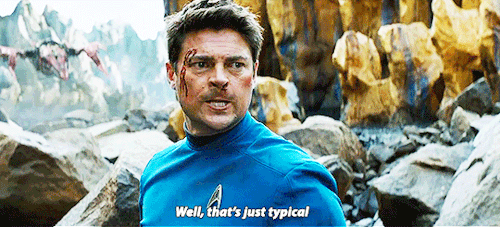
22) So 2009′s Star Trek was about Kirk and Spock moving past their conflict to form a respect and kinship with each other. Star Trek Into Darkness had them solidifying their friendship. And now we’ve reached this point:
Spock [while severely injured]: “We will do what we’ve always done, Jim: find hope in the impossible.”
23) I think something the filmmakers really use to their advantage is taking problems and solving them in a creative way through the sci-fi genre (where aliens are a norm and we have artificial gravity and such). A brilliant example of this:

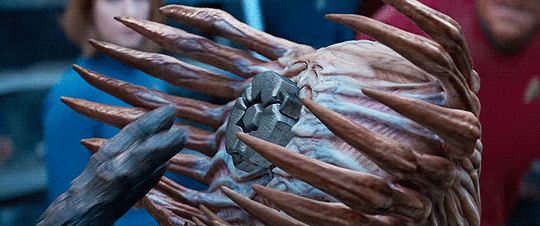
(GIFs originally posted by @trek-daily)
Also this is all practical makeup. Did I mention this film lost the makeup and hairstyling award to Suicide Squad? I’m bitter.
24) The funniest freaking part of the entire movie!
youtube
25) I know I mentioned this before, but Jaylah’s past trauma with her family is incredibly strong for me.
Jaylah [talking about Krall’s hostage camp; refusing to take Kirk and company to their crew]: “Everyone who goes there he kills!”
And it is just another great example of the relationship Scotty and Jaylah have made.
Kirk [after Jaylah leaves & Scotty moves to go after her]: “Let her go.”
Scotty: “She’s lost people too, Captain.”
The fact that Scotty is able to help Jaylah through her grief in a respectful but pressing way speaks a lot to me. And Kirk overhears this, specifically that Jaylah’s dad sacrificed himself for her. Hmm, why does that sound familiar?

The entire scene is great for me for those key reasons: it develops Jaylah, it strengths her relationship with Scotty, and it ties into Kirk’s conflict in the film.
26) The entire diversion/rescue scene on the motorcycle is awesome and one of the strongest set pieces in the entire film. It is brilliantly and intelligently choreographed, keeping the audience and Krall on their toes through the use of decoy projections. It also features a fight between Jaylah and Mannix which ties directly into her arc as he is the man who killed her father. And Kirk - who said to, “Let her go,” about ten minutes earlier - risks himself to save her. She’s a part of his crew now and I love that.

27) Remember how in the 2009 Star Trek Sulu messed up the take off of the Enterprise the first time? Well, I think the phrase, “started from the bottom now we’re here,” applies perfectly to this moment.
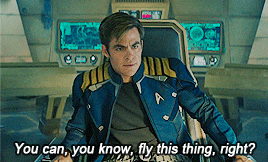
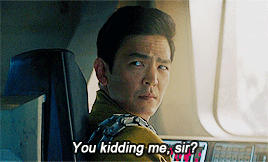
(GIF originally posted by @toakenshire)
30) I just love Jaylah’s face when she sees Krall’s planet drift away in the distance. That place was her hell. Her family was murdered there. She never thought she’d be able to escape. And now...

31) Ladies & gentlemen: the most badass moment in Star Trek’s 50 year history.
youtube
Some highlights:
Kirk saying, “That’s a good choice,” tying directly into Young Kirk rocking out to this song in the 2009 film.
Bones: “Is that classical music?”
Chekov toe tapping.
Just how f***ing awesome that moment is. It gets you pumped!
I don’t know who had the initial idea to put this scene in the film, but I love them and I want to give them an award or something. This is glorious.
32) The climactic fist fight between Kirk and Krall is a lot of fun. Similar to Syl’s alien head hiding an important piece of technology, the filmmakers are able to use the concept of artificial gravity in a space station to their advantage by choreographing a unique and fun fight scene.
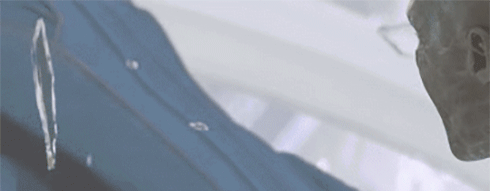
33) And with this Kirk resolves his conflict of identity in relation to his father.
Kirk: “Better to die saving lives than to live taking them. That’s what I was born into.”
34) I love that Kirk says this but for a weird personal reason. It’s something I learned as a film student and something I wish other directing students (and a lot of professional directors) would learn.
Kirk [after Commodore Paris says he saved the lives of everyone in Yorktown]: “It wasn’t just me. It never is.”
35) Holy shit, I honestly cannot believe I forgot that Spock found this in Spock Prime’s belongings:

Not only is this a wonderful thing to include in the 50th anniversary of Star Trek but also it is something Spock REALLY needed to see. He wanted to live the life Spock Prime did and he thought that meant continuing the work on new Vulcan. But then he sees that Spock Prime was with the Enterprise crew DECADES into a future. He had a family for life. And so does Spock.
36) It’s hard for your eyes not to fall on Anton Yelchin when Kirk makes a toast, “To the Enterprise and to absent friends.”


(GIF originally posted by @soundsofmyuniverse)
37) The fact that the entire main crew of the Enterprise gives the ending monologue for the first time speaks greatly to themes of unity present in the film and Kirk’s giving them credit.
38) And now I’m sad again.


39) “Sledgehammer” by Rihanna.
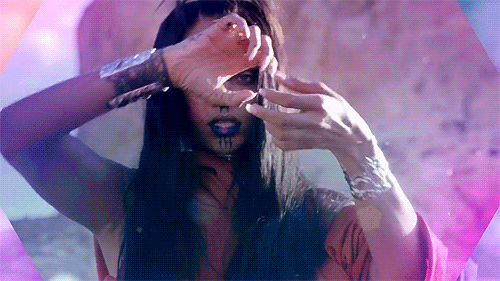
It’s not often that I talk about an end credits song for a film, but I felt I should make an exception this case. Rihanna is a major Star Trek fan, saying:
"This is something that's been a part of me since my childhood, it's never left me, I love Star Trek. It was automatic. I would do anything in terms of music. It's such a big deal not only as a fan, as a musician... because Star Trek is such a big deal across the globe."
You can feel the love for Trek come across in the song. Not necessarily a radio pop hit, I love this song nonetheless. I find it moving and it’s themes of fighting back after you get knocked down very much tie into the hope and resilience which is Star Trek. I think it is a wonderful composition and a great addition to the Star Trek musical library.
I love Star Trek Beyond. Although the 2009 film introduced me to the franchise, this film has the potential overtime to claim its place as my favorite Trek film. It is an absolutely perfect balance of old and new Trek, featuring standout writing, amazing effects, new ideas, a vibrant visual design, and a standout cast (with special mention to Sofia Boutella as Jaylah). It is a totally wonderful that taps into the hope and sense of adventure that the series has always been about. If you were disappointed with Star Trek Into Darkness or are looking to reclaim some love for the series - or even if you’re watching for the first time - give this film a viewing. You won’t regret it.
#Star Trek#Star Trek Beyond#Sofia Boutella#Chris Pine#Idris Elba#Anton Yelchin#Zachary Quinto#Karl Urban#Simon Pegg#Epic Movie (Re)Watch#Justin Lin#Doug Jung#George Takei#Rihanna#John Cho#Greg Grunberg#I See What You Did There#Movie#Film#GIF
333 notes
·
View notes
Photo

Ode de Kort
A young artist, her sculptural experiment and the recurring ‘circle’.
Nederlandstalige versie
Date of interview: May 7, 2017
Estimated reading time: 15 minutes
Ode de Kort (° 1992, Malle, BE) grew up in the silent ‘Voorkempen’ in Flanders, Belgium. As the granddaughter of sculptor Jan Dries, she grew up considering form and thinking about art. Before finishing her master photography at KASK in Ghent (Belgium), her still blossoming oeuvre was picked up by Giuseppe Alleruzzo from SpazioA in Pistoia, Italy. It was here that she launched her first solo exhibition at the beginning of this year. In this exhibition, 'O froooom O toooo O’, the circle shape - for years an old friend in her work - formally received its central place: in the title. Exercise, play and repetition are central to the production process of de Kort. In her sculptural experiment, the artist tries to stretch the boundaries of the photographic image by pollinating them with a mix from other disciplines.
De Kort also showed work in CAB (Brussels), Extra City Kunsthal (Antwerp), Hopstreet Gallery (Brussels), Tique Art Space (Antwerp) and De Directeurswoning (Roeselare). About early-age success, the artist says, "I try to look at it in a practical way: either you make work or you don’t. The rest will come.“ According to de Kort, she inherited that do-mentality from her grandfather.
On the day of the interview, Joan Panhuyzen (the TSUA photographer) and I meet each other for a coffee with breakfast in the outskirts of Antwerp, where we have a brief talk about de Kort’s work. Choreography, the subtle control in her meticulous arrangements, the encounter between sculpture and photography, circles of course, and whether - and where - humor shows in her practice. When the young artist finally leads us in, she immediately starts talking about her studio and new book (a co-publication with Silvio Ebner and SpazioA Pistoia). As she introduces the book to us, it almost seems like her hands dance with the pages. A pleasant experience that we detect a few minutes later again when de Kort demonstrates her relationship with a certain rubber circle.
Ode De Kort
SpazioA
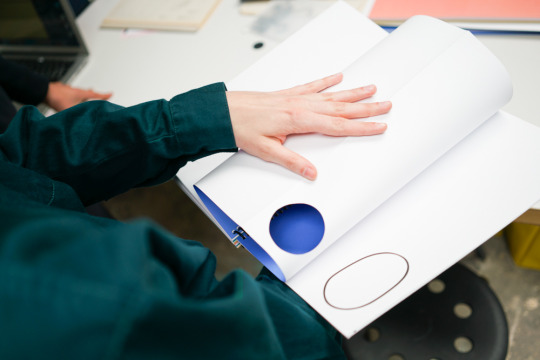
The work from my grandfather is my most treasured possession.
You grew up in a small family as an only child. One of the main characters in your life was your grandfather, sculptor Jan Dries. How did you see him?
My grandfather made an imposing impression on me as a growing child. I was sensitive and did not always like the things on my plate. He was strict but fair. Later, I mostly had philosophical conversations with him. My higher education started at the same time as the beginning of his health problems. In 2014 he died. We actually have never been able to talk about my work in a mature way, and that still pains me.
What is the most important thing you learned from him?
His 'do' mentality! Also that you always have to listen to yourself and that stubbornness is therefore fully permissible in that regard (laughs). When I turned 23, my parents gave me a work of his for my birthday. It's called "Toetssteen". If you push it, it always finds its axis back. I can manipulate, move and tilt it, but it always comes back to its natural balance. That's powerful, right? That work is my most treasured possession.
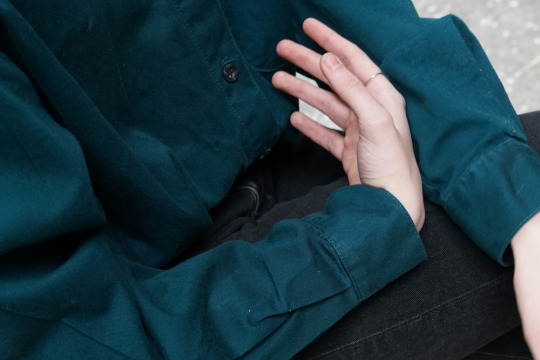
Your grandfather worked in his later artistic life mainly with white Carrara marble, a material that he remained faithful to until his death. Also in the last year, you have explicitly chosen a lot more for one form: the circle and its derivatives. In the sense of self-discipline and faithfulness to one recurring motive, I see a clear resemblance between you and your grandfather.
First I want to clarify that my grandfather has done a lot of different things in his life. He started with ceramics, in his earlier work you find a lot of color and he could draw amazingly well! Only after a long time he decided on white marble. Light began to take a more essential place in his work. How light functions and moves for example. Then Carrara marble was a logical switch for him.

It’s no devised plan for the next twenty years (laughs).

With a few objects I've been working for a couple of years now.
But to return to your statement: I think it's because of a certain attentive-ness with which I grew up. My parents and aunt are also very attentive and notable people. Once Pieternel Vermoortel said that I could easily work for five years with one stick or one circle, and she was right. With a few objects I've been working for a couple of years now. Exercise, play and repetition are important motives for me. Some may find it too monotonous to always re-use things again, but on the other hand I find it admirable to make a choice and stay behind that. Just look at an artist like Daniel Buren, whose work is characterised by the persistent use of vertical stripes. You can say, “They're only dashes", but of course then you totally miss the point. However, I do not know what camp I'm in yet. It's just happening like this now. It’s no devised plan for the next twenty years (laughs).
More recently I began to see that the circle often returns. At one point I made a radical choice.


Pure photography does not affect me too much.
Your first circle is already visible in the work 'Frozen Movement' from 2013. After that, in the Fold / Unfold work from 2014 and 2015. Was it always there to begin with?
Until last year, the recurrence wasn’t a conscious motif. More recently I began to see that the circle often returns. At one point I made a radical choice. Curator and founder of KIOSK in Ghent, Wim Waelput, invited me to the Hopstreet Gallery (Window) in Brussels and the video I made for this show, Suspension of a Circle (2016), was an important moment. For 9 minutes you see a rubber circle manipulated and played by with a stick. The fun and the movement, both crucial in my work, get their place in that video. Then I made an installation for Extra City Kunsthal in Antwerp with circles in the floor, which was part of my work '0O (2016)'. Also that was another step forward for me. I graduated as a photographer and during my studies, I was constantly searching for how I could stretch and activate the photographic medium because I do not necessarily want to show the transparency of the world or copy reality. Pure photography does not affect me too much.
I graduated as a photographer and during my studies, I was constantly searching for how I could stretch and activate the photographic medium because I do not necessarily want to show the transparency of the world or copy reality.

Interesting. Are there photographers you do feel affected by?
Photography that is placed in a larger whole by a combination of another medium. I'm a photographer myself, so I am not completely indifferent, but I find that it doesn’t stick with me when it works purely photographically. Naturally, I have a love for the sculptural experiment of the photographer, as I'm searching into that field myself. Artists that attract me greatly are Joëlle Tuerlinckx, Helen Marten and Michael Dean. I think for now, it’s rather difficult to call artists ‘just’ photographers (laughs).
Naturally, I have a love for the sculptural experiment of the photographer, as I'm searching into that field myself.

What is the last exhibition you've been to that stuck?
I’m afraid that was also not a show from a photographer (laughs). The big room in the exhibition 'Listening the pressure that surrounds you (2016)' by Thea Djordjadze in Sprueth Magers Gallery had a big impact on me. Very subtle but beautiful!
How does your work stands in relation to the camera?
The camera is just one of the ‘bodies’ I'm dealing with. A concept is also a body in a sense. The material, which is autonomous, is another. The space, movement, the limitations, all bodies. I, as the maker of work, am the manipulatory body. The image is only created through the encounter between all those bodies. The camera is as important as the stick or the rubber circle. Not more, not less.
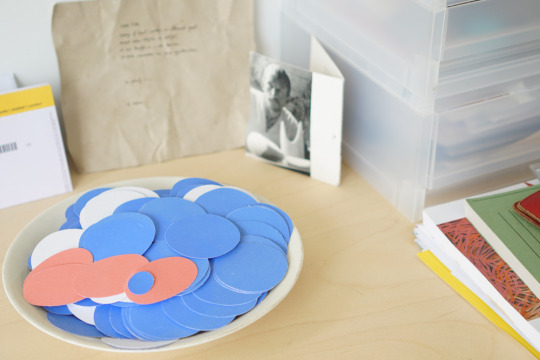
how people think about existing forms keeps me busy.
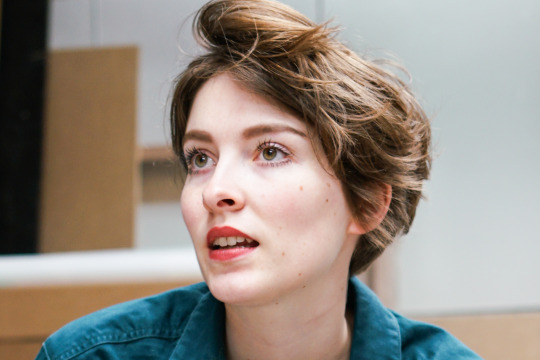
Where does the autonomy of your circles actually comes from?
Mainly from movement. I am interested in topology, a certain branch of mathematics which deals with deformations of an object in a space. But also how people think about existing forms keeps me busy. A cone shape for example. If you show his flat side, you'll see a circle. You can not see the depth behind it. My work 'Weight of a Line' from 2015 plays with a derivative of that thought. A line is a concept, not something concrete. You can not grasp or measure its weight. Just like a border. It only exists in our minds as a concept because we create a difference between one and the other.
Artists and intellectuals are ultimately the marginals of this world and that’s too easily forgotten.

People often forget that you, as an artist, are confronted with your work at all times of the day. It's like a flat hand in front of my eyes.

I am not always in the mood for people, bursting into your space like a hurricane, suddenly ‘getting’ your work all at once.
How important is it for you to talk about such ideas in your work?
I do not like lofty ways. Artists and intellectuals are ultimately the marginals of this world and that’s easily forgotten. On the market you also want to buy your vegetables with people who are friendly, honest and open (laughs). Do not get me wrong. I like talking about art, whether it's my work or work by another artist. A good conversation about something, however, needs the right context. Only from a sense of mutual respect, can real information be shared. When someone has decided what his or her opinion will be, talking sometimes makes little sense.
People often forget that you, as an artist, are confronted with your work at all times of the day. It's like a flat hand in front of my eyes. I am not always in the mood for people, bursting into your space like a hurricane, suddenly ‘getting’ your work all at once.
I was invited to a debate on social engagement in the arts. Being the youngest and only woman with four experienced men – three of them double my age - I was planning to wear a mustache. But I was too tired that morning for jokes like that (laughs).

You don’t want to defend yourself if people have a wrong idea of what you do?
Mostly not. It really depends on the person's openness. I've already heard crazy things about my work, but usually I do not mind that much. It’s also not always evident. A couple of weeks ago, I was invited to a debate on social engagement in the arts. It was an event that took place in Tour & Taxis in Brussels and the guest speakers were Wouter Hillaert, Jeroen Olyslaegers, Ben Van den Berghe, moderator Oscar Van den Boogaard and me. Being the youngest and only woman with four experienced men – three of them double my age - I was planning to wear a mustache. But I was too tired that morning for jokes like that (laughs).
Supporting attention to something, for 5 hours non-stop, is super political!
From my – maybe flawed - point of view, I was the suspected artist with "little socially engaged" work. But I find that aesthetics are not merely form but are certainly also political. Supporting attention to something, for 5 hours non-stop, is super political! That form of attention is still very rare in our society, I am afraid.

I don’t work with circles because I like the way it looks.
What are aesthetics for you?
I do not think aesthetics are mere form. Aesthetics have a whole agency. I also do not work with circles because I like the way it looks. I don’t know if shape actually exists independently.

I don’t know if shape actually exists independently.
You always really consider the exhibition space. Have you always done that?
Due to practical considerations in a space, you must move differently both with yourself and your work. I always start from the space now but that has been an evolution. As I mentioned before, I wanted to abandon the idea of framed photography that only hangs on the wall. I wanted to make the paper move in-space. The space, however, recommends it how to move, it dictates what can and what can not. I don’t want my work to be just an aesthetic object, therefor it has to work in the space.

I enjoy being busy with my clothes, my house and plants.

How important is shape for you in your life and work environment?
Very important. I enjoy being busy with my clothes, my house and plants.
Do you have a fixed rhythm?
No not really.

I need a lot of emptiness.

Do you miss that?
Sometimes I worry about that, but at the same time, I have to take my time for things. I always have to bear a difficult production process. My boyfriend, Boris Van den Eynden, works very different from me as an artist. He works from 8 o'clock in the morning until late in the evening, and in a sense he has concrete things to work with. I can’t implement it for myself though. Although I work very hard and certainly show the necessary professionalism and self-discipline. I need a lot of emptiness. It's just a very different fight.

I danced a lot as a child. I should actually do that again to relax. I often sit in my head for too long.
A fight?
There are some difficulties. For example, when do you decide that a work is finished? Deadlines work well for me. Restrictions in space and time often bring solutions.
By now, luckily, I know what process I need to go through if I want to create new work, but it still sometimes crawls into my body. In the beginning of a new production, I really have to go deep into myself and that is not always easy. To get rid of over thinking things, I sometimes draw: arrangements or spaces. Playing as such and having fun with materials is also important to me in the initial process. Look up the boundaries of my material, move, dance. From these things something can arise. I danced a lot as a child. I should actually do that again to relax. It would be beneficial for my work actually. I often sit in my head for too long.

During your studies you stopped dancing. You miss that?
In a certain way it is still present in my life. If I am, for example, making a video or a photographic image, I’m dancing with those objects. But pure dance, yes, I miss that very much! I need to move, I need an exhaust valve. I need things to let the tension out of my body. I'm actually looking for the right environment, where interesting choreography can be combined with my current physical disabilities (laughs).

You are talking about your need for relaxation. Do you use humor in your work to solve something?
No, it just happens sometimes. In the video 'Suspension of a circle' I had a lot of fun with the comic movement of that relaxed rubber circle slab. I always start from something that follows its own form and sometimes something unimaginably funny happens. This give some airiness to the work I guess. I always keep room for coincidence. Humor relieves. Sometimes it's also a discovery. Sometimes it doesn’t make sense. The comical aspect in my work is a very specific form of humor. Not everyone may appreciate it, but I notice that most people who see the comedy often follow my work better.

When did you meet your SpazioA gallerist, Giuseppe Alleruzzo?
I did a residence at Fondazione Antonio Ratti in Italy, where Giuseppe encountered my work and portfolio. We first "spoke" through email when he invited me to work in his project space. I met him in Pistoia when I built my exhibition. The experience was one of instant understanding and so we started working together after that.

Being an artist and dealing with an audience is confrontational, yes. You show yourself.

Did you sometimes feel you were too young to step into the gallery world?
When I met Giuseppe, I was still working on my master at KASK in Ghent, so it was important that I could still take my time for studies and residencies. Giuseppe has greatly supported me on that front too. For him, the relationship with the artist is the most important. I always had the feeling I was given the freedom to determine my own production rate. Also with his assistant Ariana, there is a huge ‘click’. I was really lucky with them.
I never felt I was too young to show work. Being an artist and dealing with an audience is confrontational, yes. You show yourself. Your work is critically reviewed by people. Exposing yourself is essentially frightening. But there are always uncomfortable issues. As I said, I try to look at it in a practical way: either you make work, or you don’t work. The rest will come.
I would love to make a playground once.

I am happy for you that you told us at the beginning of the interview, you don’t have a twenty-year plan. It wouldn’t feel healthy if you would have one at this age. However, I am curious about your plans in the near future. You just got your first solo exhibition 'O froooom O toooo O' in SpazioA in Pistoia, Italy. What's on your agenda now?
I will continue to work with my new book (a co-publication with Silvio Ebner and SpazioA Pistoia). In addition, I think that ‘performance’ still has an enormous capacity. Video, photography, sculpture, performance. There are so many interactions possible that new things will soon come. I'm back in the beginning of a new production process: an exciting moment always. Perhaps I urgently have to look for a suitable dance class for me. Against the tension in my body (laughs). I would also love to make a playground once. My idea is to just keep working and deal with everything as it comes.
Interview: Merel Daemen
Photography: Joan Panhuyzen
Editor English translation: Gary Leddington
0 notes